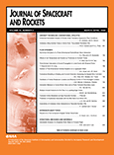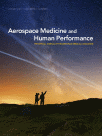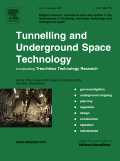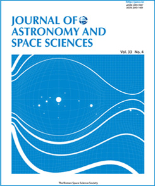
Journal of Space Safety Engineering
Scope & Guideline
Advancing aerospace safety through innovative engineering.
Introduction
Aims and Scopes
- Safety Management in Space Operations:
The journal emphasizes the development and implementation of safety management systems tailored for the complexities of space missions, including risk assessment and mitigation strategies. - Space Traffic Management:
There is a significant focus on the management of space traffic, addressing the challenges posed by increasing satellite constellations and the need for effective collision avoidance measures. - Regulatory Frameworks and Legal Considerations:
Papers often explore the evolving legal frameworks surrounding space operations, including international treaties and national regulations, to ensure compliance and safety. - Technological Innovations for Safety:
Research includes advancements in technology aimed at enhancing safety in space operations, such as autonomous systems, monitoring tools, and cutting-edge materials. - Human Factors and Safety:
The journal addresses the human aspects of space missions, including psychological support, health risks, and the impact of long-duration missions on astronaut performance. - Environmental Impact and Sustainability:
There is a growing interest in the environmental implications of space activities, focusing on sustainable practices and the management of space debris.
Trending and Emerging
- Long-Duration Mission Safety:
There is an increasing emphasis on the safety and health risks associated with long-duration space missions, highlighting the need for robust support systems for astronauts. - Space Debris Mitigation Strategies:
Research focusing on innovative solutions for space debris removal and mitigation is gaining traction, reflecting heightened awareness of the risks posed by orbital debris. - AI and Machine Learning Applications:
The integration of AI and machine learning technologies in space safety analysis and traffic management is emerging as a critical area of interest, showcasing the potential for enhanced operational efficiency. - International Collaboration on Space Safety:
Emerging themes include the importance of international cooperation in establishing safety standards and protocols, particularly as new actors enter the space domain. - Health and Performance Monitoring:
There is a growing focus on monitoring astronaut health and performance in real-time, utilizing advanced technologies to ensure safety in both short and long missions.
Declining or Waning
- Traditional Aerospace Engineering Practices:
Research that strictly adheres to conventional aerospace engineering methodologies is decreasing as the field evolves towards more integrated and innovative approaches to safety. - General Space Exploration Discussions:
Broad discussions on space exploration without a specific focus on safety protocols or risk management are becoming less prevalent, as the journal prioritizes rigorous safety analyses. - Historical Case Studies:
The frequency of historical case studies in space operations is waning, giving way to forward-looking analyses that emphasize contemporary and future challenges in space safety.
Similar Journals

JOURNAL OF SPACECRAFT AND ROCKETS
Elevating Aerospace Insights to New Heights.The Journal of Spacecraft and Rockets, published by the American Institute of Aeronautics and Astronautics, serves as a premier platform for disseminating cutting-edge research in the fields of aerospace engineering and space science. Established in 1964, this esteemed journal has evolved over nearly six decades, solidifying its reputation with a consistent publication history through 2024. With an impact factor positioning it within the Q2 quartile in both Aerospace Engineering and Space and Planetary Science categories, it ranks as a vital resource, featuring high-quality manuscripts that address the latest advancements and findings in spacecraft design, propulsion systems, and austere planetary exploration. The journal's rigorous peer-review process ensures that articles meet the high academic standards expected by practitioners in the aerospace sector. Researchers, engineers, and students alike will find the Journal of Spacecraft and Rockets to be an invaluable resource for both foundational knowledge and innovative research developments, advancing the future of aeronautics and astronautics.

Aerospace Medicine and Human Performance
Transforming Aerospace Medicine through Open AccessAerospace Medicine and Human Performance is an influential journal published by the Aerospace Medical Association, serving as a vital resource for researchers and professionals dedicated to the study of human performance within the realms of aerospace environments. With an ISSN of 2375-6314 and an E-ISSN of 2375-6322, this journal has garnered attention since its inception in 2015 and is dedicated to the dissemination of innovative research, reviews, and case studies that address the complexities of human factors in aviation and space travel. Despite being classified in the Q4 quartile in both Medicine (Miscellaneous) and Public Health, Environmental and Occupational Health categories as of 2023, and its respective Scopus rankings showing opportunities for growth, the journal plays a critical role in bridging gaps in knowledge and promoting advancements in medical practices and safety standards in aerospace contexts. The journal operates under an Open Access model, ensuring that valuable research is readily available to a diverse audience. As it converges into the years up to 2024, it remains committed to enhancing the collaboration and communication within the aerospace medical community.

Journal of Patient Safety and Risk Management
Enhancing healthcare systems through informed safety protocols.Journal of Patient Safety and Risk Management, published by SAGE Publications Ltd, stands as a vital resource for the exploration and discourse surrounding safety and risk in healthcare environments. Established in 2018 and continuing through 2024, this journal delivers a rich repository of knowledge aimed at improving patient safety protocols and mitigating risks within healthcare systems. With an ISSN of 2516-0435 and an E-ISSN of 2516-0443, the journal is indexed in several categories with a notable performance in Health Policy and Health (social science), rated in Q3, while also addressing Leadership and Management in Q4. Despite the absence of an open access model, the journal provides a platform for researchers, healthcare professionals, and students to stay informed about the latest developments and evidence-based practices within the dynamically evolving landscape of patient safety. Given its Scopus rankings, which include a percentile of 46th in Health (social science) and 36th in Health Policy, the journal is positioned as a credible and impactful publication for those dedicated to enhancing patient care through robust risk management strategies.

International Journal of Aviation Aeronautics and Aerospace
Advancing Knowledge in Aviation Safety and ReliabilityInternational Journal of Aviation Aeronautics and Aerospace, published by Embry-Riddle Aeronautical University, serves as a pivotal platform for the dissemination of innovative research in the fields of aerospace engineering, civil and structural engineering, and safety, risk, reliability, and quality. With an ISSN of 2374-6793 and designated as an open access journal since 2014, it enables unhindered global access to its scholarly content, fostering collaboration among researchers, professionals, and students in the aviation sector. The journal's presence spans from 2014 to 2024 and is recognized within the Q3 category across multiple engineering domains according to recent metrics. Despite its emerging status, it holds respectable rankings in Scopus, demonstrating its relevance and contribution to the academic community, particularly in dynamic engineering sectors. It is an essential resource for anyone looking to enhance their understanding of advancements and challenges in aviation and aerospace solutions.

Space: Science & Technology
Exploring New Horizons in Space ScienceSpace: Science & Technology is a premier, open-access journal published by the American Association for the Advancement of Science, dedicated to advancing knowledge in the rapidly evolving fields of aerospace engineering and space sciences. Since its inception in 2021, the journal has rapidly established itself as a vital resource, achieving an impressive Q1 ranking in Aerospace Engineering and Q2 ranking in Space and Planetary Science as of 2023. With a Scopus rank placing it 45th out of 153 in Aerospace Engineering and 47th out of 104 in Space and Planetary Science, it serves as a critical platform for researchers, engineers, and students alike to disseminate their findings and engage with the latest developments in their field. The journal encourages innovative research articles, technical notes, and reviews that push the boundaries of what's possible in space exploration and technology. With its commitment to open access since 2021, Space: Science & Technology ensures that pioneering research is readily available to a global audience, promoting collaboration and knowledge sharing in an increasingly interconnected scientific community.

Journal of Aeronautics Astronautics and Aviation
Fostering Collaborative Research in Aeronautics and AstronauticsJournal of Aeronautics Astronautics and Aviation, published by the Aeronautical & Astronautical Society Republic of China, is a premier scholarly journal dedicated to advancing knowledge in the dynamic fields of aerospace engineering and space sciences. Operating under the ISSN 1990-7710, this journal plays a pivotal role in disseminating innovative research and practice-oriented studies that address both theoretical and applicative aspects of aeronautics and astronautics. With an impressive history spanning from 2006 to 2024, the journal has established itself as a valuable resource for researchers, professionals, and students alike, featuring contributions that reflect the latest developments and trends within the industry. In the latest rankings, it holds a Q3 classification in Aerospace Engineering and Q4 in Space and Planetary Science, indicating its growing influence despite its niche scope. With an open access model that facilitates widespread readership, the Journal of Aeronautics Astronautics and Aviation strives to foster collaboration and knowledge sharing in these ever-evolving scientific domains.

TUNNELLING AND UNDERGROUND SPACE TECHNOLOGY
Shaping the Underground Landscape through Research Excellence.TUNNELLING AND UNDERGROUND SPACE TECHNOLOGY, published by Pergamon-Elsevier Science Ltd, stands at the forefront of research in the fields of tunnelling, underground construction, and geotechnical engineering. With the high reputation reflected in its prestigious Q1 status in both Building and Construction and Geotechnical Engineering and Engineering Geology quartiles, this journal serves as an essential platform for pioneering studies and innovative practices. The journal has demonstrated a notable impact in the academic community, evidenced by its impressive Scopus rankings, with an esteemed rank of #7 in Geotechnical Engineering out of 229 journals, placing it in the 97th percentile. This positions it as a vital resource for researchers and professionals seeking the latest advancements in underground space technology. Published since 1986 and continuing through 2024, the journal aims to disseminate cutting-edge research that enhances both the science and practice of tunnelling, providing a significant repository for students and experts eager to advance their understanding and expertise in this critical area of engineering.

Journal of Astronomy and Space Sciences
Where Groundbreaking Research Meets Open Access.The Journal of Astronomy and Space Sciences, published by the Korean Space Science Society, is a premier open-access platform dedicated to advancing the fields of astronomy, astrophysics, and space sciences. Established in 1984, the journal has been instrumental in disseminating high-quality research findings, fostering collaboration among scientists globally, and providing insights into the dynamics of our universe. With an ISSN of 2093-5587 and an E-ISSN of 2093-1409, the journal has gained notable recognition, currently ranking in the Q3 quartile in Earth and Planetary Sciences and Physics and Astronomy as of 2023. Although the journal's H-Index is currently unspecified, its commitment to rigorous peer-review processes and open-access availability ensures that groundbreaking research is accessible to a wide audience. Based in Seoul, South Korea, the journal is poised to continue supporting innovative research through 2024 and beyond. Researchers, professionals, and students alike will find valuable resources and opportunities within its pages, further establishing this journal as a crucial resource in the exploration of the cosmos.

JOURNAL OF NAVIGATION
Navigating the Future of Ocean ResearchJournal of Navigation, published by Cambridge University Press, is a premier academic journal that has served the maritime community since its inception in 1948. With an esteemed ISSN of 0373-4633 and an E-ISSN of 1469-7785, this journal is recognized for its rigorous peer-reviewed research that significantly contributes to the fields of Ocean Engineering and Oceanography. The journal ranks in the Q2 quartile, showcasing its position among the top-tier publications in these domains, with impressive Scopus rankings placing it 24th in Oceanography and 22nd in Ocean Engineering. While currently not an open-access publication, it offers valuable insights and advancements relevant to researchers, professionals, and students, fostering a deeper understanding of navigation in both theoretical and applied contexts. The Journal of Navigation aims to disseminate innovative research that impacts maritime practices and enhances navigational safety and efficiency.

AEROSPACE AMERICA
Advancing the Frontiers of Aerospace KnowledgeAerospace America, published by the American Institute of Aeronautics and Astronautics, stands as a crucial platform within the field of aerospace engineering. With over 30 years of dedication to advancing aerospace knowledge, the journal provides a comprehensive exploration of topics ranging from cutting-edge aerospace technology to aviation policy and industry developments. While it currently resides in the fourth quartile of the Scopus rankings for aerospace engineering, the journal aims to enhance its visibility and impact among researchers, professionals, and students. Access to its content is traditionally through institutional subscriptions, aligning with its mission to foster informed discussions and innovations in aerospace. As professionals and academics navigate the evolving landscape of aeronautics, Aerospace America remains a pivotal resource for those committed to the future of aerospace exploration and technology.